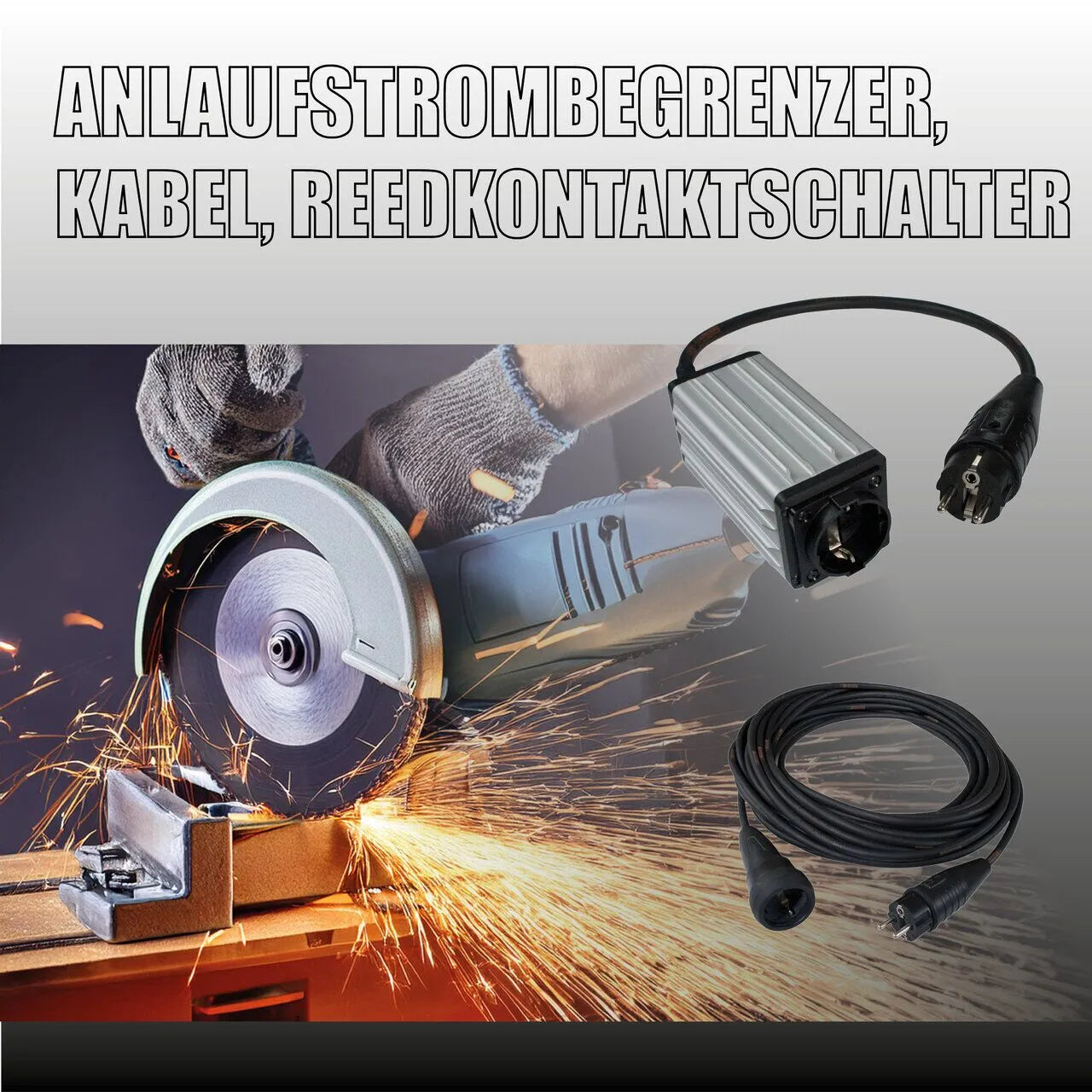Do you have an account?
Log in, so that checkout is faster.

The Inrush current limiter ASB of SCHABUS are in connection with AC electric motors and Power tools used to start in neutral. They are also for Capacitor motors, large transformers and halogen lamps suitable. This electronic current limiter prevents the tripping of the Home circuit breakers in the network connection box high inrush currents prevented.
Our extension cables are used at SCHABUS handcrafted from high-quality materials TITANEX – H07 RN-F, the Number 1 among the rubber hose lines. And high-quality ones. Schuko-ABL Sursum Mains plugs and sockets. We test each individual cable with a special testing device. VDE-Tested according to criteria for insulation and protective conductor resistance. TITANEX It is used in areas where the application criteria are absolutely important and must be adhered to exactly.
Electric motors rotate a shaft using magnetic fields. The magnetic field is generated by copper coils when current flows through the wire. Before the magnetic field is established after switching on, the copper wire appears to the fuse as a short circuit. And it almost is, since there is a conductive connection between the two terminals, and the fuse blows because enormous currents flow in this brief moment (see tripping diagram). The ASB (Automatic Safety Device) connects a power resistor in series with the copper coil, which instantly dissipates the excess current as heat, thus limiting the current. After 0.7 seconds, the magnetic field has long since built up, the motor is rotating and consuming the current itself, and only then does a relay, connected in parallel to the power resistor, fully switch on the power supply. With the machine running, the ASB itself functions only as a normal conductor, and the power resistor can cool down again.
Electric motors that start in neutral draw a very high current for a very short time at the moment of startup. If this current is limited by the ASB (Automatic Start-up Circuit Breaker), the motor will still start. However, if the motor starts under load, because it has to move the compressor pistons against the pressure in the tank, it cannot start with the limited current. If the ASB then switches on fully after 0.7 seconds, the full starting current is still drawn. The limiter had no effect, and the fuse blows. The ASB is of no help in this situation.
An inverter converts a DC voltage into a DC voltage, z.BA 12-volt car battery provides 230 volts of alternating current and can deliver approximately 10 amps at its rated output. Electronics regulate the current and voltage, but this regulation takes time, which isn't available for rapid load changes. While the inverter limits the high inrush current at startup, it switches to full current after 0.7 seconds, and a large current is still quickly required. Since no inverter has large capacitors capable of rapidly delivering high currents, and the connected car battery is too slow to respond, the voltage drops across the inverter. Either the inverter's fuse blows, or its internal protection circuits simply shut it down.
Yes - if the inverter is a pure sine wave inverter.
No, if the inverter has a square wave output.